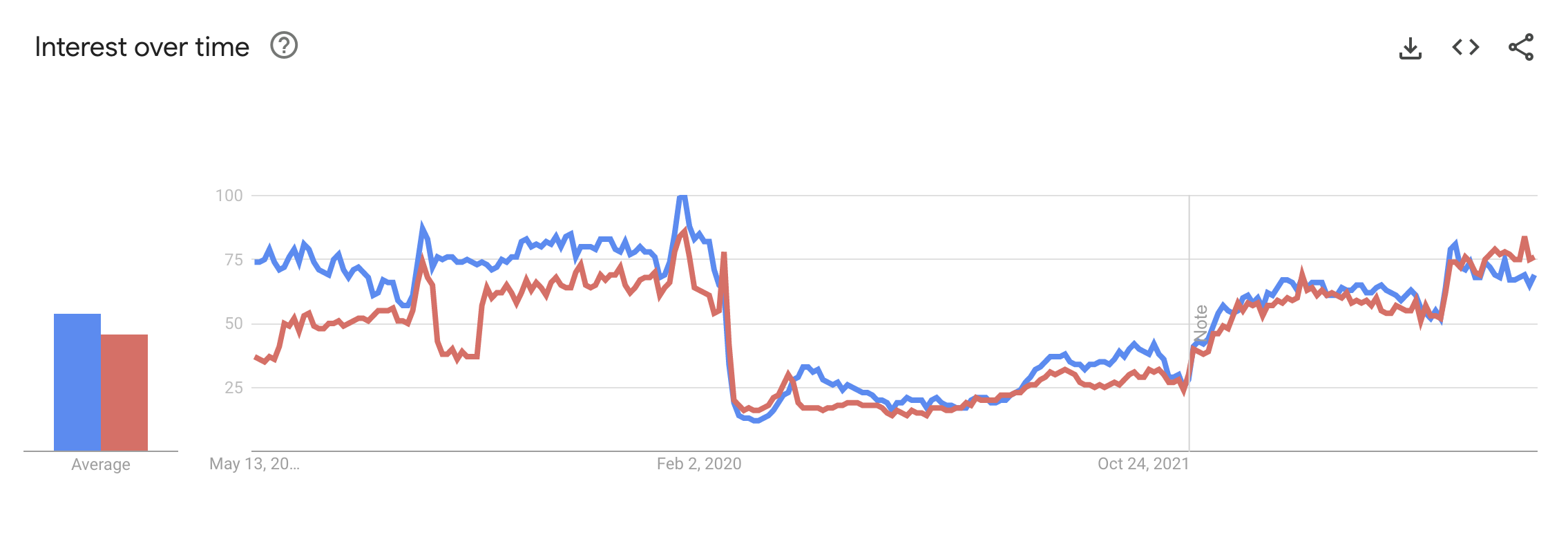When it comes to searching for flights and finding the best deals, travelers are often faced with an overwhelming number of options. In recent years, two prominent platforms, Google Flights and Skyscanner, have emerged as popular choices for travelers seeking convenient and cost-effective flight booking experiences. As we enter 2023, it is worth examining these platforms to determine which one offers a superior service.
In this article, we will delve into a detailed comparison of Google Flights and Skyscanner to determine which platform stands out as the better choice in 2023. We will examine their respective features, pricing structures, user-friendliness, and additional offerings. By the end, you will have a comprehensive understanding of these platforms and be equipped to make an informed decision when planning your next trip.
Google Flights
Google Flights, as part of Google's comprehensive travel suite, has gained attention for its innovative features and integration with other Google services like Maps and Calendar.
Google Flights recently introduced a groundbreaking price guarantee for its US customers. This feature promises to refund the price difference if fares drop after booking, offering customers up to $500 in refunds for a maximum of three flights within a calendar year. This service automatically tracks prices until departure, ensuring a hassle-free experience. These offerings have positioned Google Flights as a formidable contender in the flight search and booking arena.
Another clear standout for Google Flights is that the prices quoted are tracked live, setting it apart from Skyscanner where prices are not always the most up-to-date one. Sometimes you will find yourself clicking on the cheapest option only to find the price has been increased, making it less than transparent. With Google flights, you know exactly what you are getting when you see the real-time price on their site.
Moreover, Google Flights boasts a user-friendly interface that makes it remarkably easy to search for flights and compare prices across various airlines and travel agents. Its intuitive design allows users to swiftly navigate through the platform and quickly access the information they need. The streamlined interface, combined with the live price tracking feature, offers a convenient and efficient flight booking experience for travelers.
It also goes without saying that, as part of Google's ecosystem, Google Flights benefits from the extensive resources and support of the tech giant. This integration provides users with a sense of reliability and confidence in the platform's performance, backed by the technological expertise and infrastructure of Google.
Skyscanner
For years, Skyscanner has been a clear front-runner in online flight search. It was truly the first popular option that allowed users to see flights in a calendar format and decide which dates were the cheapest options, as well as see various filters for optimal flight arrival and departure times, number of layovers, airlines etc.
One major Skyscanner feature that is much loved among flexible travelers, such as backpackers and location independent digital nomads is the “Everywhere” feature. When searching with Skyscanner, you can leave the destination blank by typing “everywhere”. It will then show you destinations based on their price. It is extremely valuable when you don’t have fixed plans and want to get from one continent to another.
For example, you could pay $800 for a flight from Bangkok to Brussels, but why would you when you can find a $300 flight from Ho Chi Minh City to Paris.
The major downside with Skyscanner however, is that the prices are not quoted in real-time (like in Google Flights), and as a result it isn’t always transparent which is the cheapest.
Additionally, some of the lowest prices quoted on Skyscanner are the prices given by third-party online travel agencies, which can often be quite spammy. These include sites like eDreams, Trip.com, GotoGate and so on.
Why are these sites a bit spammy? Well, essentially they quote a lower flight price and entice you to their site, and then they charge excessive prices for the luggage and other fees compared to if you book directly with the airline provider, meaning that in the end it will work out as more costly than if you had selected the slightly more expensive option provided by Skyscanner – not exactly transparent is it?
All in all, Skyscanner wins in customization and finding cheap routes – it is definitely a great tool for doing some research if you really care about getting the best deals you can, but beware that the cheapest option quoted by Skyscanner is not always the cheapest.
Overall Comparison: Google Flights vs. Skyscanner
Both options have their clear advantages and disadvantages when it comes to searching for that great flight deal. Skyscanner has been the most prominent platform over the years, however the past years have seen Google Flights steal the number one spot – thus my personal opinion is that Google Flights is the top platform of 2023.
The data doesn’t lie as well, here’s what Google Trends (the irony) say about the popularity of the two platforms:

red: Google Flights, blue: Skyscanner
As you can see, they have been pretty much neck and neck over the past 5 years with slightly more popularity given to Skyscanner, however in recent years Google Flights has been catching up and the past year it has been trending significantly compared to Skyscanner which seems to have seen a drop.
It’s also worth noting that Skyscanner is particularly more popular in Europe, whereas Google Flights is by far the most popular option in North America. This could be due to the new price guarantee for US customers though, as mentioned earlier.
To summarize the pros and cons mentioned earlier, here is our final conclusion on the two products:
Google Flights Pros and Cons
Pros
- Live price tracking provides real-time and accurate pricing information.
- Integration with other Google services like Maps and Calendar offers a seamless travel planning experience.
- User-friendly interface allows for easy flight search and comparison across multiple airlines and travel agents.
- Price guarantee feature refunds the price difference if fares drop after booking.
- Backed by the resources and support of Google, instilling reliability and confidence in the platform.
Cons
- Limited focus on customization compared to Skyscanner.
- May not have the same level of flexibility in finding the cheapest destinations.
Skyscanner Pros and Cons
Pros
- "Everywhere" feature allows users to find the cheapest destinations based on price.
- Extensive filters and sorting options for customization.
- Great tool for researching and finding the best deals.
- Particularly valuable for flexible travelers i.e. digital nomads and backpackers.
Cons
- Prices quoted are not always up-to-date, leading to potential discrepancies.
- Some of the lowest prices are quoted by third-party online travel agencies, which can result in hidden fees and higher costs.
- Less integration with other services compared to Google Flights.
General Tips for Finding Cheap Flights
Booking cheap flights can be a rewarding experience if you know where to look and when to book. Here are some general tips to help you secure the best deals:
Timing is key: It's often recommended to book flights well in advance to take advantage of lower prices. Generally, the optimal time to book domestic flights is around 6-8 weeks before departure, while for international flights, booking 2-3 months ahead can yield better deals. However, it's important to keep in mind that prices can vary depending on factors like destination, seasonality, and demand, so it's advisable to monitor prices and set price alerts to seize any sudden price drops. Also, sometimes you actually do get really good deals if you wait until the last minute – it all depends on the demand.
Be flexible with travel dates and times: Being flexible with your travel dates can open up opportunities for significant savings. Consider traveling on weekdays or during off-peak seasons when prices tend to be lower. Additionally, opting for flights with inconvenient departure or arrival times, such as early morning or late at night, can sometimes result in cheaper fares.
Compare prices across multiple platforms: While it's generally recommended to book directly from the airline's website, it's worth comparing prices on different platforms to ensure you're getting the best deal. Online travel agencies and flight search engines often offer competitive prices and package deals. Be sure to compare the total costs, including any additional fees or baggage charges, before making a final decision.
Sign up for airline newsletters and fare alerts: Subscribing to airline newsletters and fare alerts can provide you with valuable information on promotions, discounts, and flash sales. Airlines often send out exclusive deals to their subscribers, giving you an advantage in finding cheap flights. Setting up fare alerts on various travel websites can also notify you when prices drop for your desired routes.
Consider alternative airports and layovers: Exploring alternative airports near your departure or arrival destinations can sometimes lead to cheaper fares. Additionally, being open to layovers can offer significant savings, as direct flights are often priced at a premium. However, it's important to consider the duration and convenience of the layover to ensure it's worth the cost savings.
Remember, finding cheap flights requires patience, flexibility, and diligent research. By considering these tips and keeping an eye on price trends, you can increase your chances of booking affordable flights that suit your travel needs.



